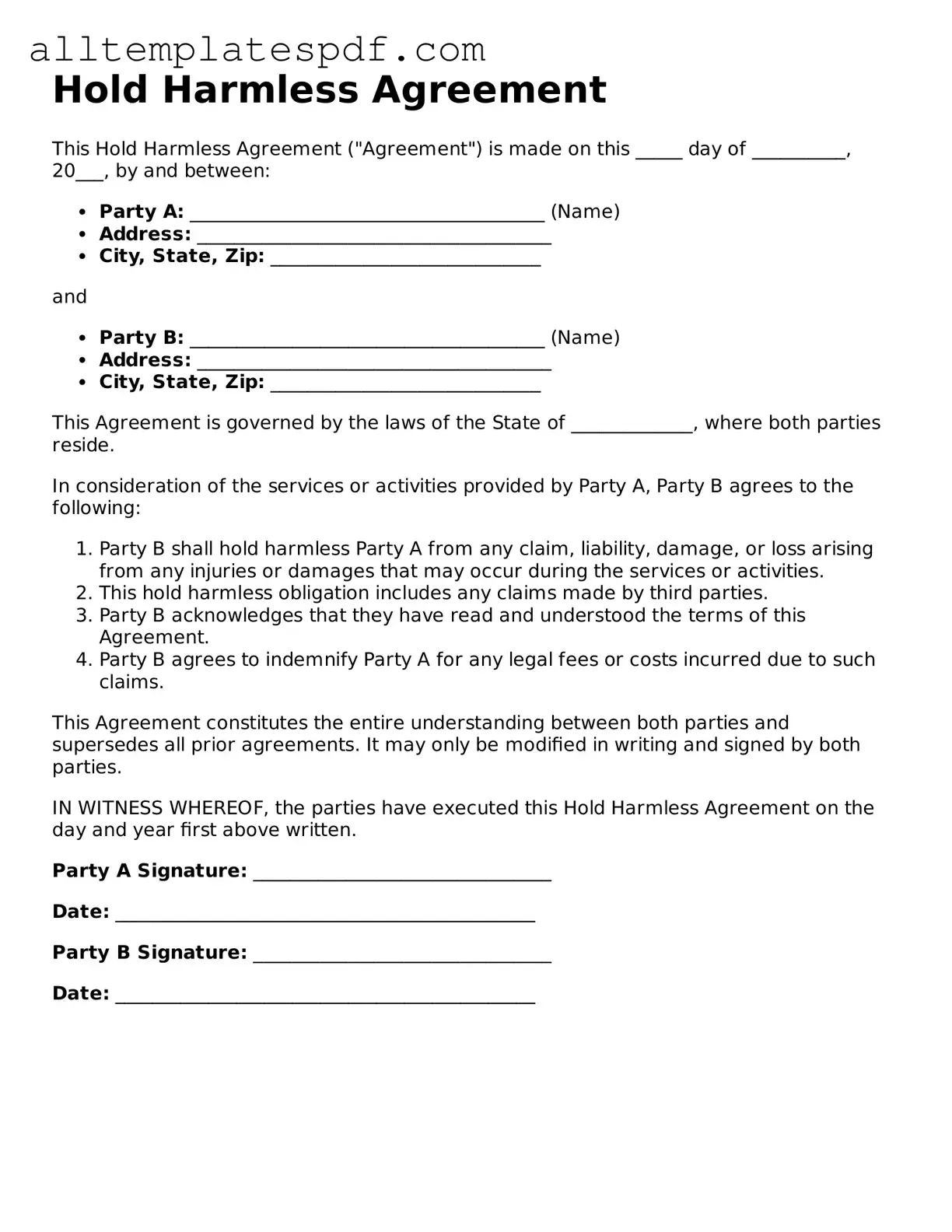Attorney-Approved Hold Harmless Agreement Template
A Hold Harmless Agreement is a legal document that protects one party from liability for any damages or injuries that may occur during a specific activity or event. By signing this agreement, individuals or organizations agree to assume the risks involved and release the other party from responsibility. To ensure your interests are safeguarded, consider filling out the form by clicking the button below.
Open Editor
